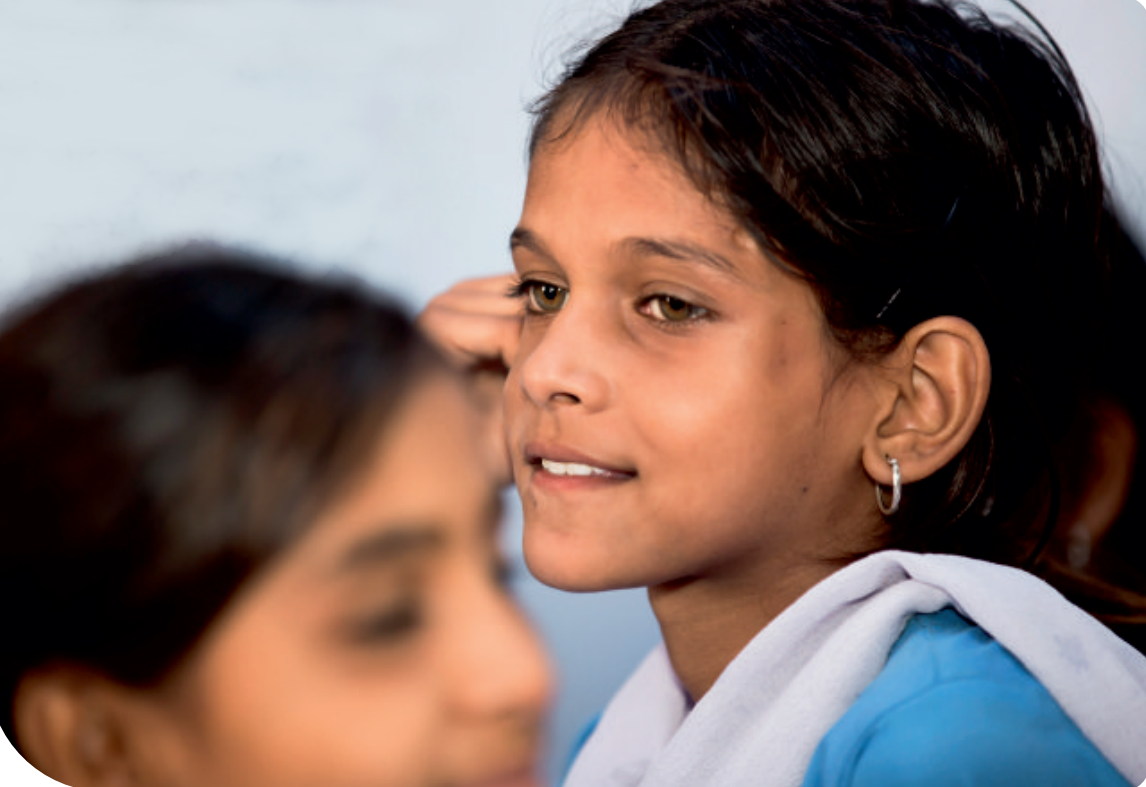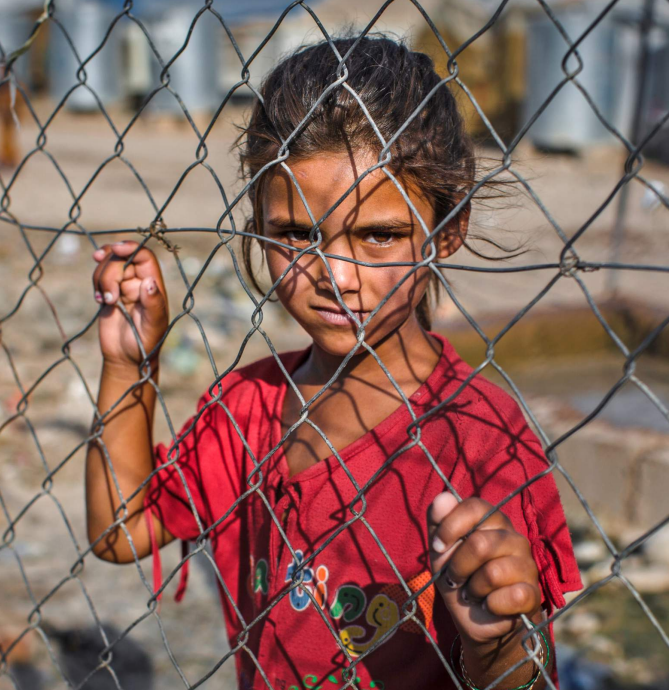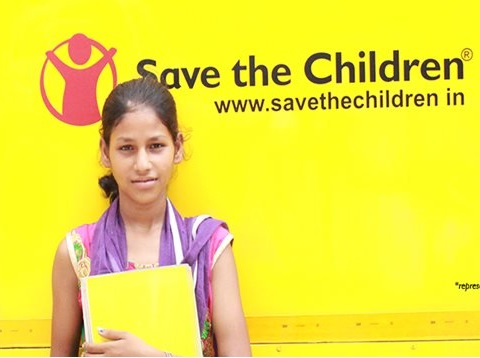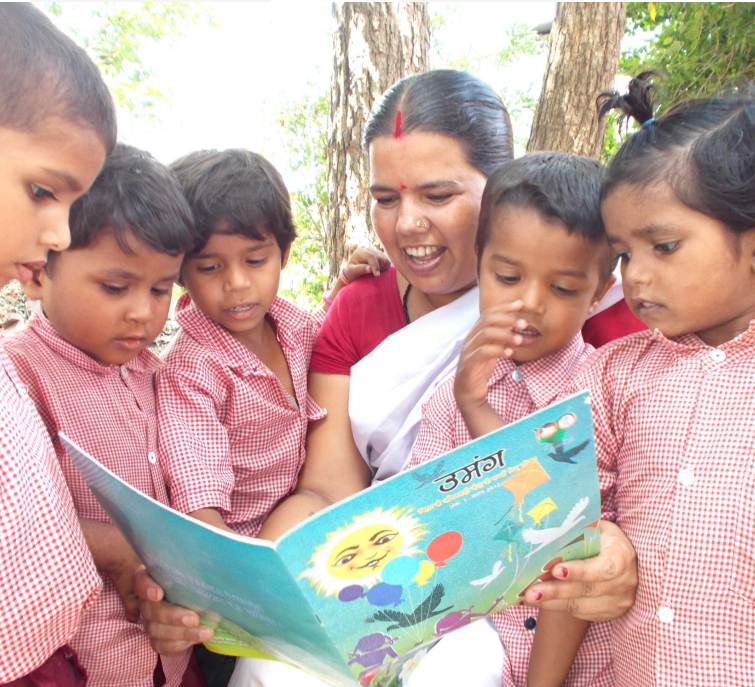 New Delhi: Save the Children India (also known as Bal Raksha Bharat) has highlighted the disproportionate impact of the ravaging COVID-19 on girls, with a focus on populations in urban slums through a research-led study – THE WORLD OF INDIA’S GIRLS – WINGS 2022 – themed Spotlight on Adolescent Girls Amid COVID-19 was launched today. The report reveals the situation of girls during and after the first pandemic induced nationwide lockdowns in India, which has only worsened with the multiple mutations and successive waves of the COVID-19 virus since then.
New Delhi: Save the Children India (also known as Bal Raksha Bharat) has highlighted the disproportionate impact of the ravaging COVID-19 on girls, with a focus on populations in urban slums through a research-led study – THE WORLD OF INDIA’S GIRLS – WINGS 2022 – themed Spotlight on Adolescent Girls Amid COVID-19 was launched today. The report reveals the situation of girls during and after the first pandemic induced nationwide lockdowns in India, which has only worsened with the multiple mutations and successive waves of the COVID-19 virus since then.
The study unfolds the repercussions on girls’ access to health, education, and opportunities for play and recreation with a focus on the changes that have taken place in the overall context of their insecurities. It also includes understanding the coping mechanisms adopted by the families to deal with the increased health and nutritional insecurities, the abrupt decline in learning opportunities, the pressure on early marriages, and limited play and recreation facilities.
Speaking on the report, Sudarshan Suchi, CEO, Save the Children said, “India@100 cannot achieve its full potential unless we secure 100 per cent of its children today. WINGS 2022 Report is our way of bringing to the fore the risks our nation runs into by not investing in and securing all its children. Specifically, the fact that India @75 has almost half its children not able to equitably secure themselves with their basic rights is a tale by itself! With this report, we would like to reaffirm our commitment to being a part of the solution. Along with the various specific steps the report provides a way forward for all of us and more importantly, the obligation to include the voices of children – the primary stakeholders – to shift the approach from a process of planning for them to planning with them. Children cannot wait – not any longer!”
 The study has also captured the voices of adolescent girls, to describe the changes that have occurred in their lives. The findings are paramount to framing an appropriate response to build back better by way of formulating recommendations to all stakeholders #allyoupforher. These will enable the policymakers and implementers to make informed long-term strategic measures to safeguard and uphold the rights of girl children.
The study has also captured the voices of adolescent girls, to describe the changes that have occurred in their lives. The findings are paramount to framing an appropriate response to build back better by way of formulating recommendations to all stakeholders #allyoupforher. These will enable the policymakers and implementers to make informed long-term strategic measures to safeguard and uphold the rights of girl children.
With the aim of making effective and wide changes, the study was conducted in four States – Delhi, Maharashtra, Bihar, and Telangana, representing the four geographical zones (East, West, North and South).
The following are the cross-cutting recommendations from the report:
 Scale-up investments on girl child: Considering that the COVID-19 pandemic and its aftereffects will continue to impact the lives of girls soon, there is a need to increase investments in the girl child and ensure that health, nutrition, education, and protection services are well-resourced and inclusive with a specific focus on girls.
Scale-up investments on girl child: Considering that the COVID-19 pandemic and its aftereffects will continue to impact the lives of girls soon, there is a need to increase investments in the girl child and ensure that health, nutrition, education, and protection services are well-resourced and inclusive with a specific focus on girls.- Build engagement of multi-stakeholders: Coordinated, and synergised efforts required for State, civil society organisations, private sector, academia, media, community, citizens, and girls to work together to address the issue of violation of rights of girls.
- Listen to voices of girls: It is important to ensure that dialogue and interaction with girls capture their experience and the impact of COVID-19 to develop response plans to improve girls’ access to services.
- Build agency of girls: Building the agency of girls and empowering them to exercise their life choices by (i) advocating with the government for improved services and functioning of protection mechanisms for children, (ii) creating opportunities for child and young people-led advocacy and accountability on child rights issues including child marriage, and (iii) utilise children’s groups, youth groups and other forums for children to disseminate information about child rights, and lead activities for children in their communities.
 Strengthen the delivery system: There is a need to strengthen the delivery mechanisms to ensure the effective implementation of programmes for girls.
Strengthen the delivery system: There is a need to strengthen the delivery mechanisms to ensure the effective implementation of programmes for girls.- Provide additional support to the institutions, structures, and frontline workers in terms of finance, capacity-building, providing incentives to work proactively by motivating, educating and convincing parents and guardians of girls to advance child rights and promote the best interests of children, particularly girls.
- Improve and develop community-based monitoring systems to ensure the involvement of different committees established at the ward/village/gram panchayat level such as CPC and (VHSNC), among other efforts.
- Generating evidence on the girl child: Invest in building evidence on the impact of COVID-19 on girls. Efforts in generating data on girls in the context of COVID-19 should be directed at all the critical child rights issues including health, nutrition, education, and child protection.
 Constructive guidelines prepared by Save the Children, India, for safe return to Anganwadi centres and schools have been shared with the State Education Departments of Karnataka, West Bengal, Uttar Pradesh, Telangana and Andhra Pradesh along with safe return protocols including class-wise timetable, duration of sessions, safety procedures (i.e., sanitising classrooms after each class and provision of personal protective equipment (PPE) kits) to be followed, and re-course steps, if COVID-19 cases emerge.
Constructive guidelines prepared by Save the Children, India, for safe return to Anganwadi centres and schools have been shared with the State Education Departments of Karnataka, West Bengal, Uttar Pradesh, Telangana and Andhra Pradesh along with safe return protocols including class-wise timetable, duration of sessions, safety procedures (i.e., sanitising classrooms after each class and provision of personal protective equipment (PPE) kits) to be followed, and re-course steps, if COVID-19 cases emerge.
The first WINGS report in 2014 explored unequal challenges faced by girls and women despite economic growth and social development. WINGS 2018 examined the underlying gender stereotypes and their implications on girls’ safety in public spaces, and its deterrence in realising their potential.
Impact in Delhi
The biggest impact in Delhi has been on Girls Nutritional Index, including Menstrual Hygiene and Continuity of Education:
- The health and nutritional well-being of adolescents has taken a major hit.
- Four in five households (79 per cent) suffered from food insufficiency.
- Two in three mothers (63 per cent) reported that their adolescent daughters faced difficulties in accessing sanitary napkins during the lockdown period.
- Nine out of 10 adolescent girls (93 per cent) reported that they did not have access to or receive any health and nutrition services.
- One in two adolescent girls (45 per cent) did not have access to information on sexual and reproductive health rights (SRHR) during the pandemic.
- School closures have caused a major setback to learning continuity.
- Closure of learning facilities disrupted the lives of over 320 million children majority of whom were enrolled at the primary and secondary level (86 per cent).
- Seven in 10 adolescent girls (71 per cent girls) attended online classes during the lockdown.
- Nine in 10 mothers (89 per cent) clearly indicated that the pandemic had adversely impacted their daughter’s learning to a large extent.
- Since the closure of schools, one in five girls (20 per cent) were not contacted by school staff as reported by mothers during the pandemic period.

Impact on Bihar
- The health and nutritional well-being of adolescents took a major hit during the pandemic. In households living in poverty, women and girls were particularly disadvantaged in their access to household resources, including food and nutrition. Adolescent girls faced difficulties in accessing sanitary napkins during the lockdown period and did not have access to information on sexual and reproductive health rights (SRHR).
- Three in four mothers (73 per cent) clearly indicated that the pandemic had adversely impacted their daughter’s learning. Only 2 per cent of girls attended online classes during the lockdown.
- Job losses and reduced household incomes due to the pandemic have increased the likelihood of child marriages. Nine in 10 mothers (88 per cent) shared that they have not come across any awareness-building activity around the issues of child marriage during the pandemic.
- Physical restrictions due to COVID-19 severely dented the opportunities for adolescent girls to meet their friends, engage in sports, play and participate in extracurricular and other leisure activities. One in two girls (48 per cent) reported increased household chores as compared to pre-pandemic days.
Impact in Maharashtra
- The health and nutritional well-being of adolescents took a major hit during the pandemic. In households living in poverty, women and girls were particularly disadvantaged in their access to household resources, including food and nutrition. Adolescent girls faced difficulties in accessing sanitary napkins during the lockdown period and did not have access to information on sexual and reproductive health rights (SRHR).
- Two in three mothers (68 per cent) clearly indicated that the pandemic had adversely impacted their daughter’s learning. One in two adolescent girls (54 per cent) attended online classes during the lockdown.
- Job losses and reduced household incomes due to the pandemic have increased the likelihood of child marriages. Almost all mothers (97 per cent) shared that they have not come across any awareness-building activity around the issues of child marriage during the pandemic.
- Physical restrictions due to COVID-19 severely dented the opportunities for adolescent girls to meet their friends, engage in sports, play and participate in extracurricular and other leisure activities. Three in five girls (61 per cent) reported increased household chores as compared to pre-pandemic days.

